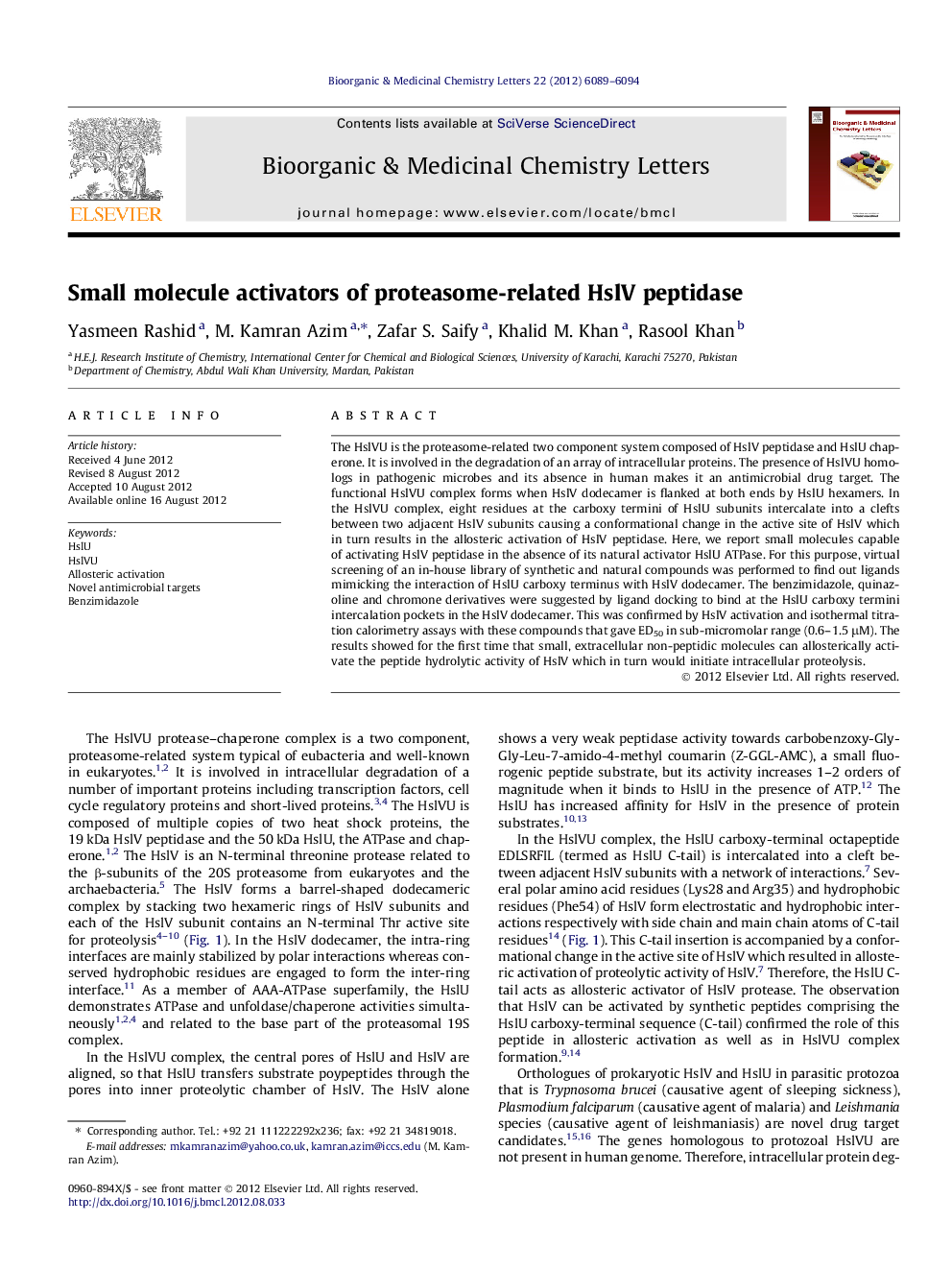| Article ID | Journal | Published Year | Pages | File Type |
|---|---|---|---|---|
| 10596487 | Bioorganic & Medicinal Chemistry Letters | 2012 | 6 Pages |
Abstract
The HslVU is the proteasome-related two component system composed of HslV peptidase and HslU chaperone. It is involved in the degradation of an array of intracellular proteins. The presence of HslVU homologs in pathogenic microbes and its absence in human makes it an antimicrobial drug target. The functional HslVU complex forms when HslV dodecamer is flanked at both ends by HslU hexamers. In the HslVU complex, eight residues at the carboxy termini of HslU subunits intercalate into a clefts between two adjacent HslV subunits causing a conformational change in the active site of HslV which in turn results in the allosteric activation of HslV peptidase. Here, we report small molecules capable of activating HslV peptidase in the absence of its natural activator HslU ATPase. For this purpose, virtual screening of an in-house library of synthetic and natural compounds was performed to find out ligands mimicking the interaction of HslU carboxy terminus with HslV dodecamer. The benzimidazole, quinazoline and chromone derivatives were suggested by ligand docking to bind at the HslU carboxy termini intercalation pockets in the HslV dodecamer. This was confirmed by HslV activation and isothermal titration calorimetry assays with these compounds that gave ED50 in sub-micromolar range (0.6-1.5 μM). The results showed for the first time that small, extracellular non-peptidic molecules can allosterically activate the peptide hydrolytic activity of HslV which in turn would initiate intracellular proteolysis.
Related Topics
Physical Sciences and Engineering
Chemistry
Organic Chemistry
Authors
Yasmeen Rashid, M. Kamran Azim, Zafar S. Saify, Khalid M. Khan, Rasool Khan,
